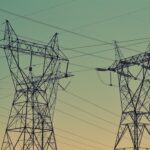

The birth of DuPa 2.0: A revolutionary step in property valuation
Sustainability is no longer an afterthought in the property sector – it has become an essential pillar for assessing value and risk. The story of DuPa 2.0, the most advanced sustainability assessment platform in the Netherlands, began with Reinier Mijsberg, head of the Valuation Team at ABN AMRO Bank. In this interview, Reinier reveals how he took the initiative to put sustainability at the heart of valuation reports and how this resulted in the birth of DuPa 2.0.
Challenges and innovations of DuPa 2.0
Reinier’s journey began in 2020, when a sustainability section led by the DGBC was introduced. He vividly remembers the first question of that section: “Can the windows open?” This simple criterion was far removed from his vision of sustainability. Determined to bring about change, Reinier started looking for partnerships within the industry. He mobilised the 10 largest valuation firms to review and improve sustainability ratings.
It turned out not to be an easy task. For 2.5 years, Reinier had to overcome numerous obstacles – from financial challenges to resistance within the industry. The focus at the time was mainly on achieving energy label C, while ambitions shifted to label A and above over those 2.5 years. Large firms had the resources to embrace change, but smaller firms struggled with the time investment and resources required.

Reinier’s role as a driving force was therefore crucial. He convinced stakeholders of the need to change and advocated for wide acceptance of DuPa 2.0. The goal? Creating a platform that would be embraced not only by ABN AMRO, but by the entire industry. “It has taken too long,” says Reinier, “but change is inevitable.”
“Discussing the importance of sustainability is no longer a choice but a necessity. We are already at sea, and the call now is to come on board. After all, intrinsic motivation is what drives real change.”
– Reinier Mijsberg, Head of the Valuation Team at ABN AMRO Bank
Technological support for DuPa 2.0
DuPa 2.0 includes a comprehensive set of 80 new fields, including climate risks, that map sustainability in a way that goes beyond superficial assessments. However, its introduction was not without its challenges. Reinier points to the variable rates of acceptance of valuers and the need for uniformity within the industry. Intrinsic motivation remains crucial for successful adoption of DuPa 2.0, although some parties need a little push through mandatory implementation.
The role of technology, such as CFP Green Buildings’ software, has proved essential in collecting and analysing data for DuPa 2.0. Reinier: “From May, parties like KATE and CFP will start working with an API, making the impact even bigger.” Reinier strongly believes in the power of AI to connect data and increase impact. The first DuPa 2.0 reports have already appeared, albeit with challenges around qualitative versus quantitative measurements of sustainability impacts on property value.
CFP plays a vital role as one of the providers of valuable data for DuPa 2.0. Valuers have the freedom to choose which provider best suits their specific needs, because it makes a huge difference whether you need to value a small office of 200 square metres or a large terminal in the port of Rotterdam. Reinier: “What CFP is very good at is providing insight into the costs of switching from one energy label to another, an expertise they have been developing for quite some time. In the future, we will also need to jointly focus on climate adaptation, allowing valuers to assess even more effectively how properties are affected by climate risks.”
DuPa: a fundamental shift in the property sector
DuPa 2.0 marks a fundamental shift in the property sector. It is not just a tool for appraisers, but one that paves the way to a more sustainable and resilient property market, according to Reinier. “Although we are working on minor improvements and an update to DuPa 2.0, we need to look ahead. That is why we are now working on DuPa 3.0, which will take a truly different approach. In DuPa 3.0, ‘Paris Proof’ will become the norm, with wider stakeholder involvement. Accountants will also participate, ISBN will be more actively involved and DGBC has developed a framework for ‘Paris Proof’, which we want to build on with a focus on CO2 emissions. DuPa 3.0 will also take stranded assets into account.”
DuPa 2.0: Towards a more sustainable real estate market
With DuPa 2.0, a new chapter is being ushered in the real estate sector, where sustainability is no longer an option but a crucial factor in assessing value and risks. It is the result of years of dedication and collaboration within the industry, led by visionaries like Reinier Mijsberg. As DuPa 2.0 now leaves its mark on the sector, attention is already turning towards DuPa 3.0, where ‘Paris Proof’ will be the standard. This ongoing evolution promises not only a more sustainable real estate market but also one that is more resilient against the challenges of the future.






